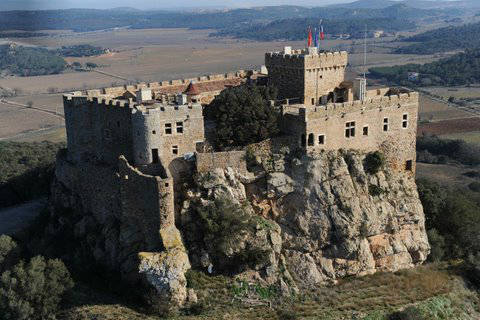An old Roman fort, the Château de Narbonne, was the citadel of Toulouse, but the demolitions of 1215–16 removed it from the circuit of the walls, and it served as headquarters of the Albigensian Crusade in the great siege of 1217–18.
Toulouse, in southern France, was another great city which demonstrated its resilience in the face of a determined attack. It defied the army of the Albigensian Crusade in 1211: Simon de Montfort was unable to surround the city, whose walls were three miles round, and he could not depend on reinforcements. But, decisively, the crusaders were starving outside the city while Toulouse was able to buy food through its other gates, so after two weeks the siege was raised. The crusader army went on to attack Moissac, but even this small walled town defied them for a month, and in the end fell because of dissension between the garrison of knights and German mercenaries and the citizens.
Through changing political conditions, the walls of Toulouse were almost destroyed in 1215–16, but in September 1217 Count Raymond of Toulouse regained the city and once again de Montfort and his crusading army laid siege in October 1217. The citizens were united in their defiance of the crusader army and they organized themselves efficiently – men, women and even children. They improvised fortifications with earthworks and timber, and, where these did not exist, poured down stones and other missiles from the roofs upon the attacking French, making the narrow streets impassable. The citadel, the Château de Narbonne, was held by the French, but it was completely cut off from the city. Once the fury of their first attacks was spent, the French settled down for a long siege. Focaud of Berzy advised Simon: “We must work out how to maintain a long siege so as to destroy the town. Every day we must make raids across the whole country so as to deprive them of corn, grain, of trees too and vines, of salt, timber and other provisions. In this way we shall force them to surrender.” By January 1218, reinforcements from France were starting to arrive, and more poured in in May and June, but although savage assaults were mounted from both sides of the city, supported by elaborate siege equipment, it was never wholly closed off, and this enabled the citizens to receive reinforcements. When Simon de Montfort was killed by a stone from a mangonel on 26 June 1217, the siege was abandoned. The city was besieged for a third time in 1228, but ultimately it surrendered to the overwhelming power of the French monarchy.
